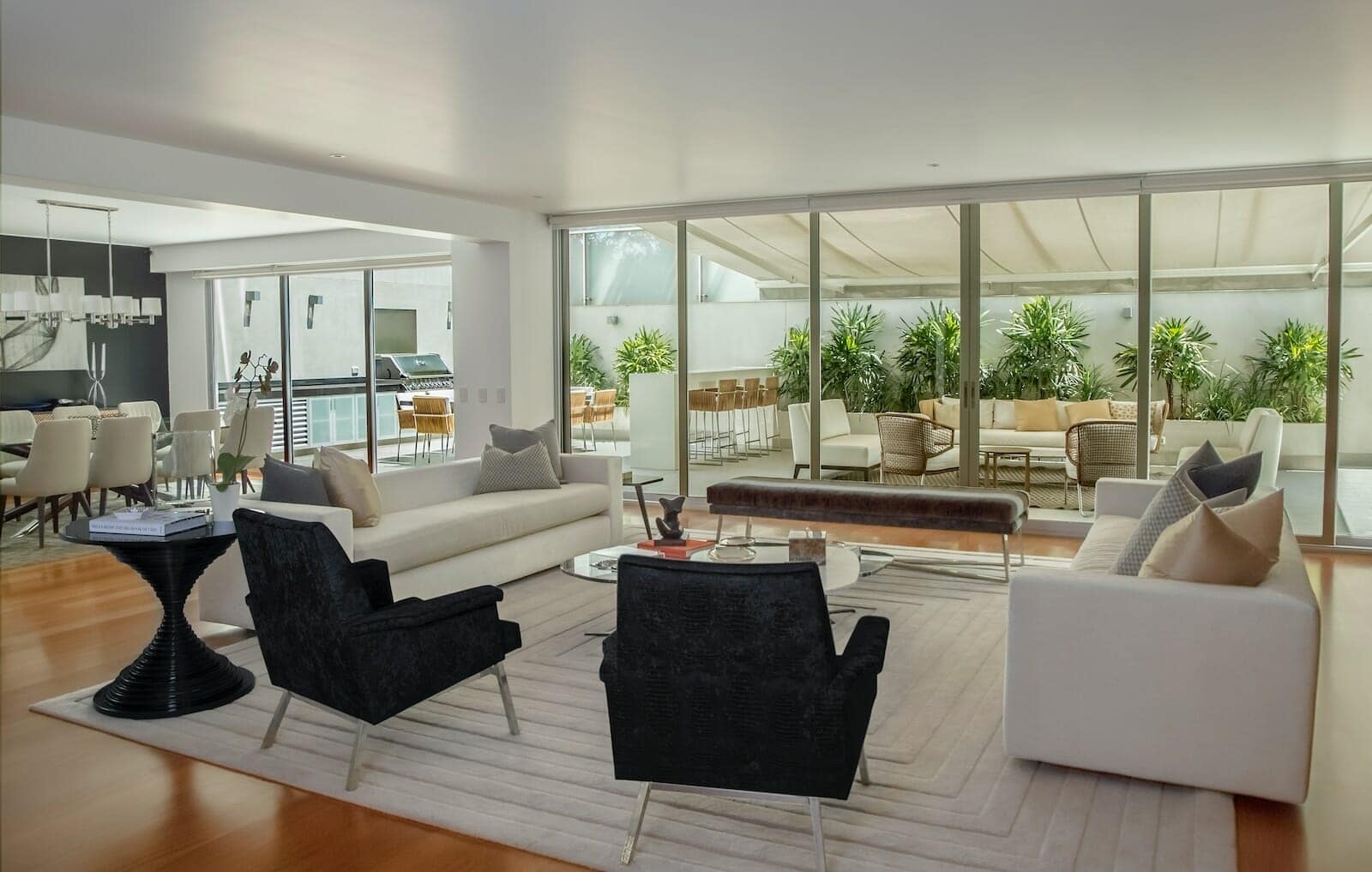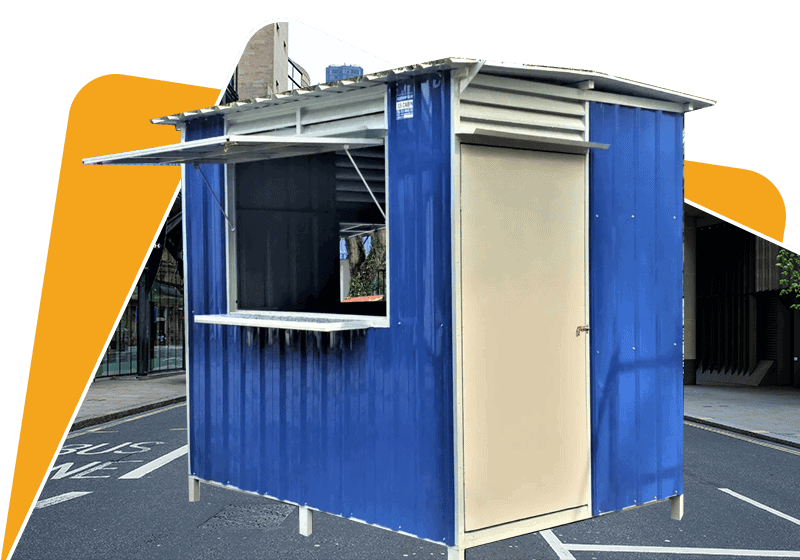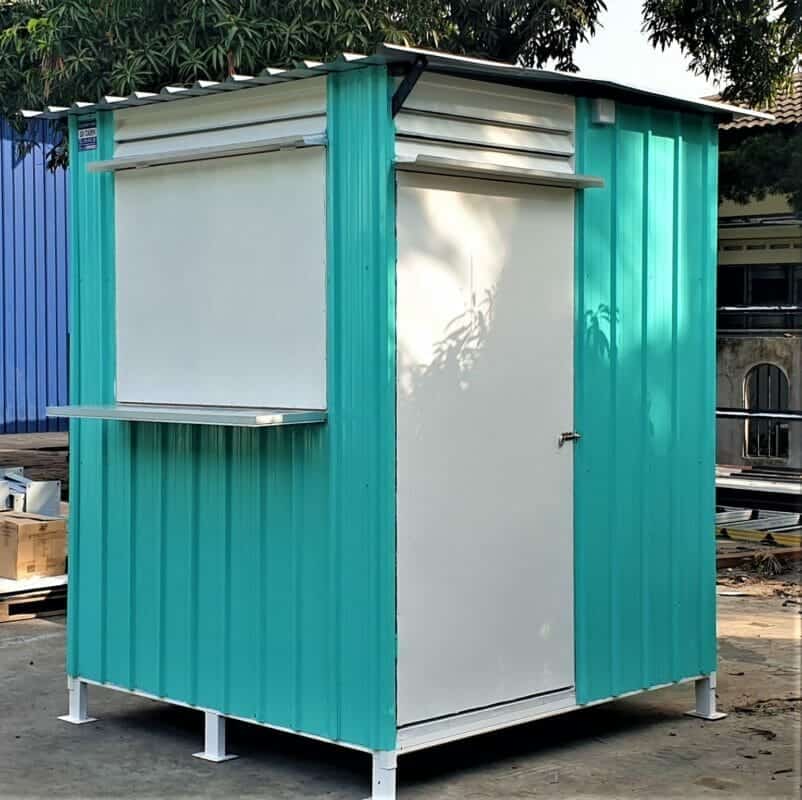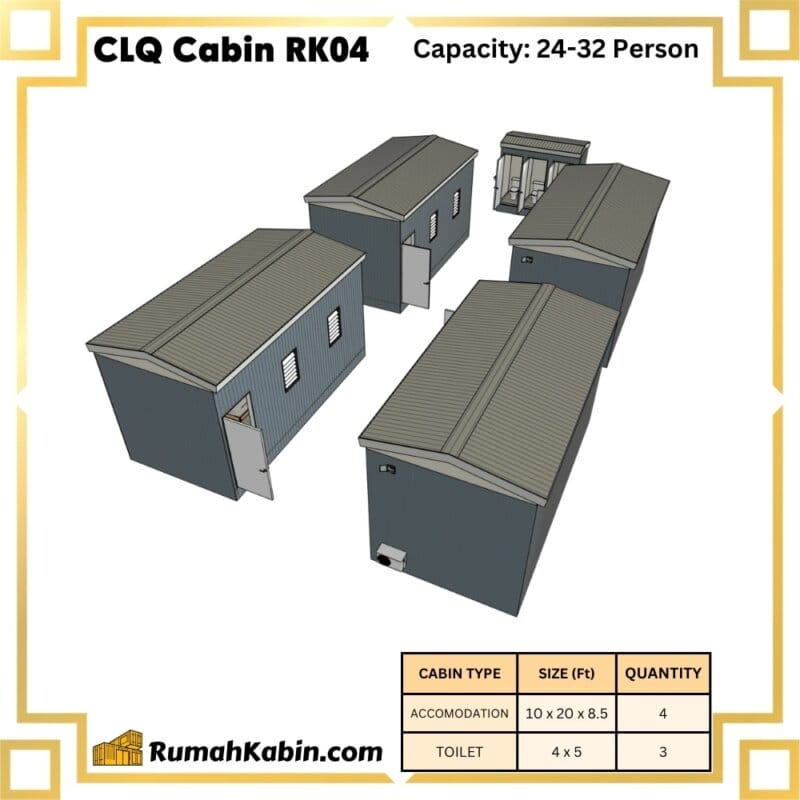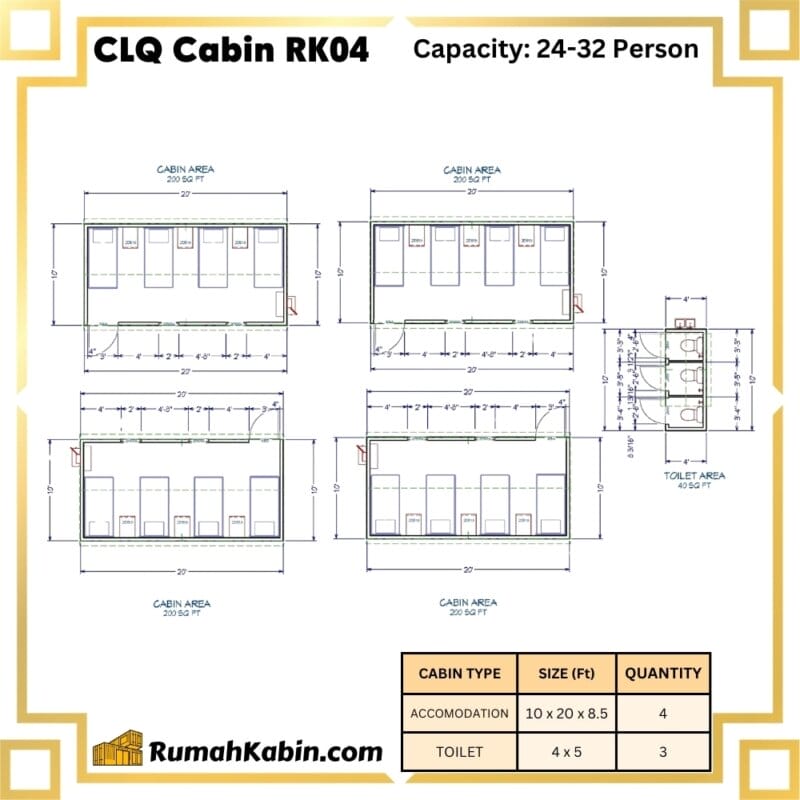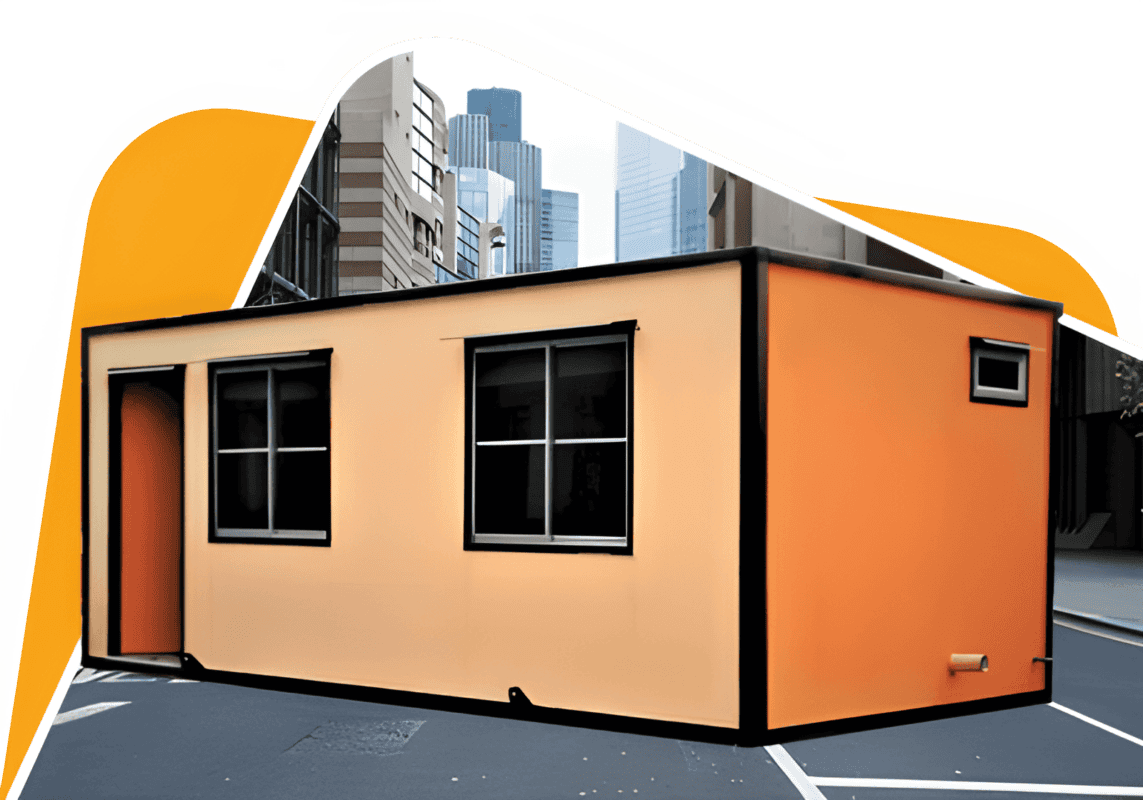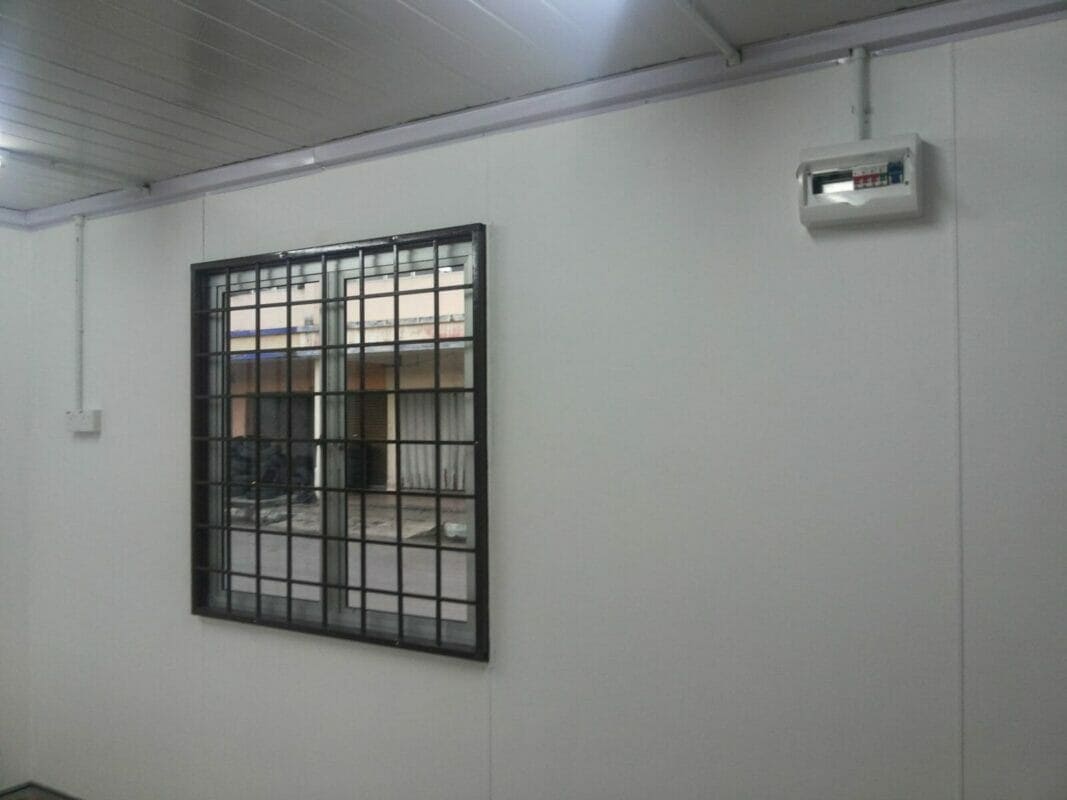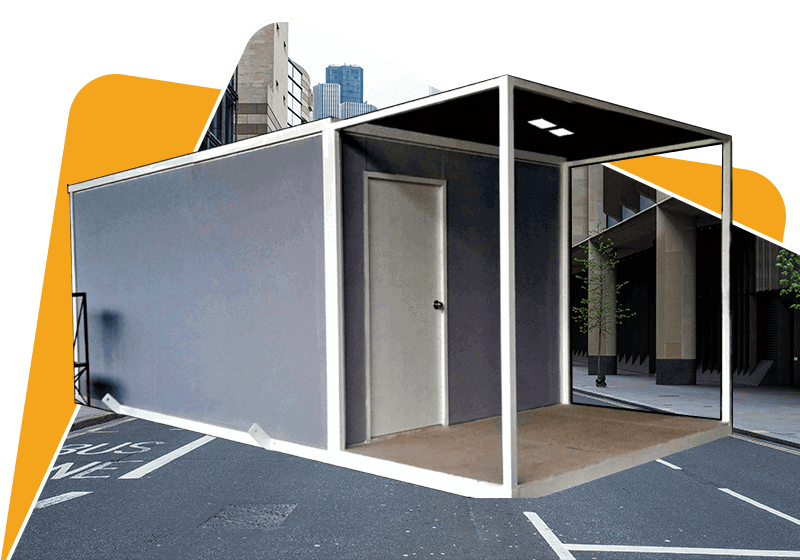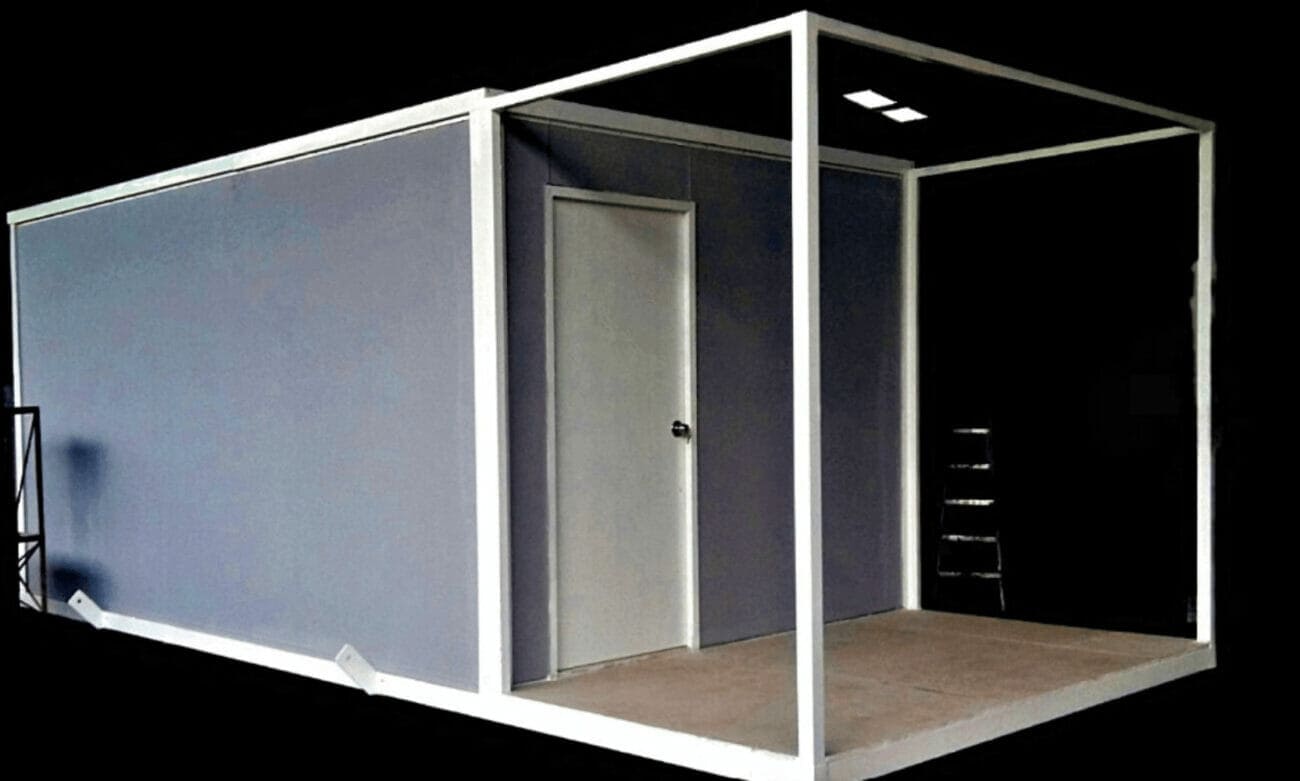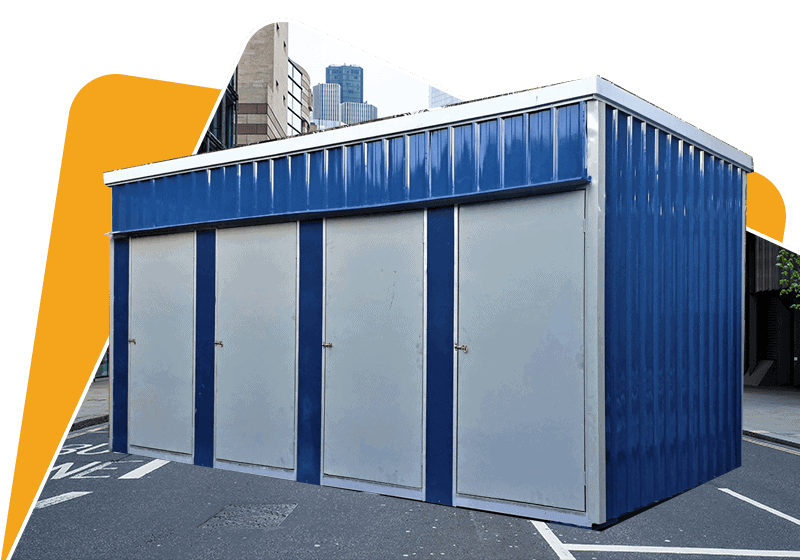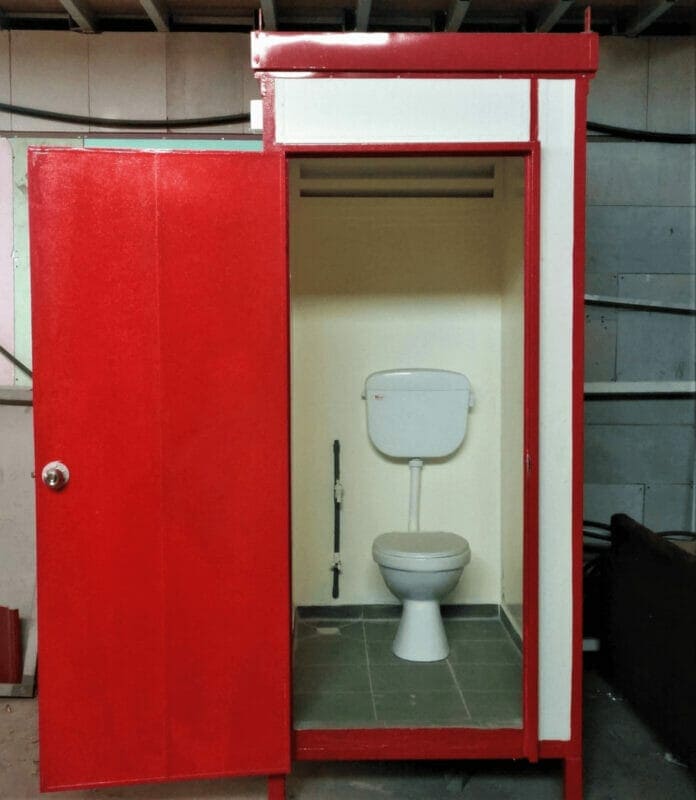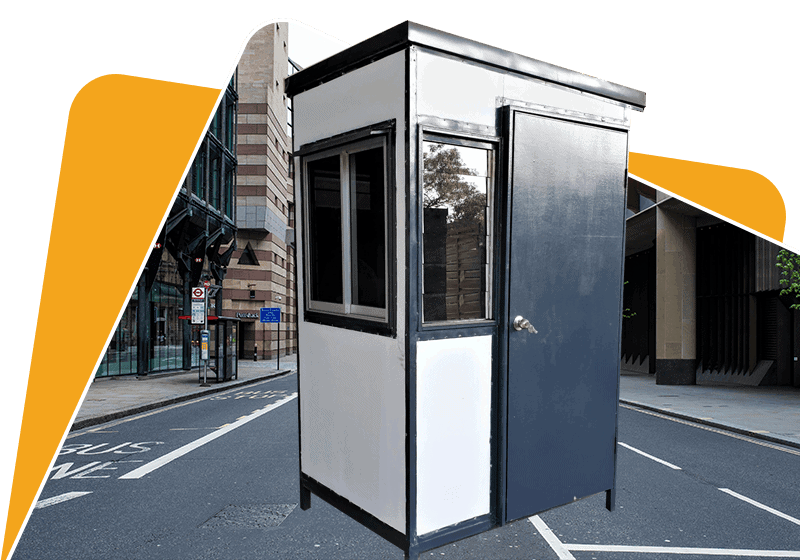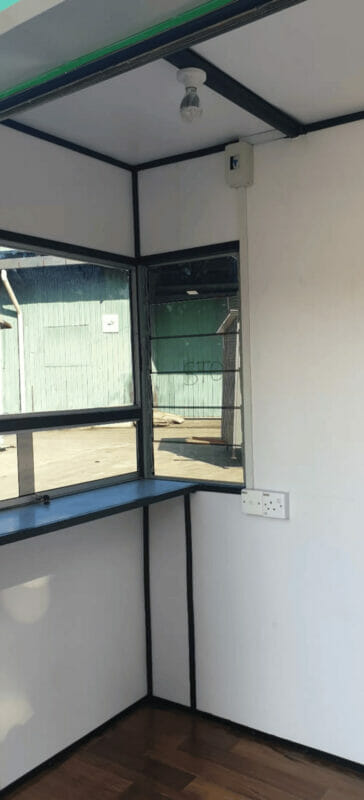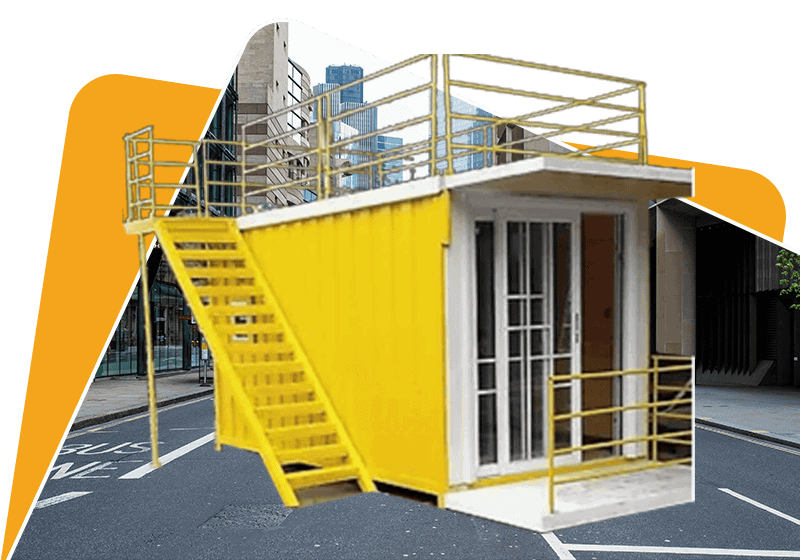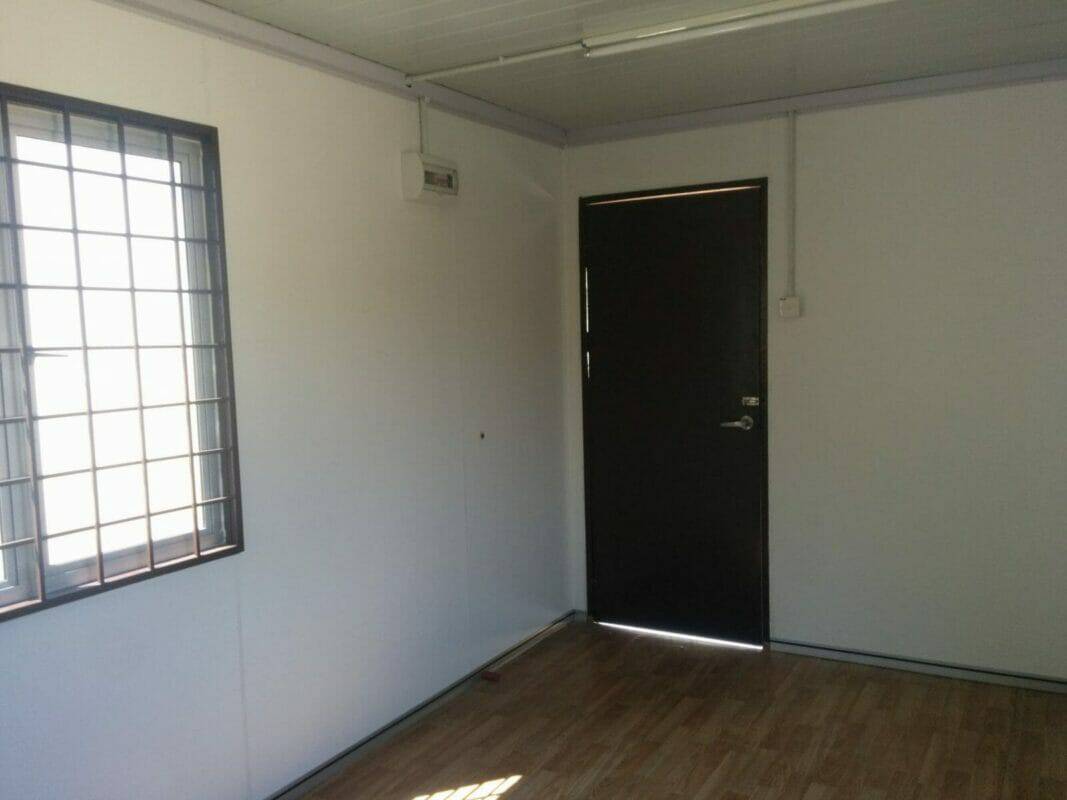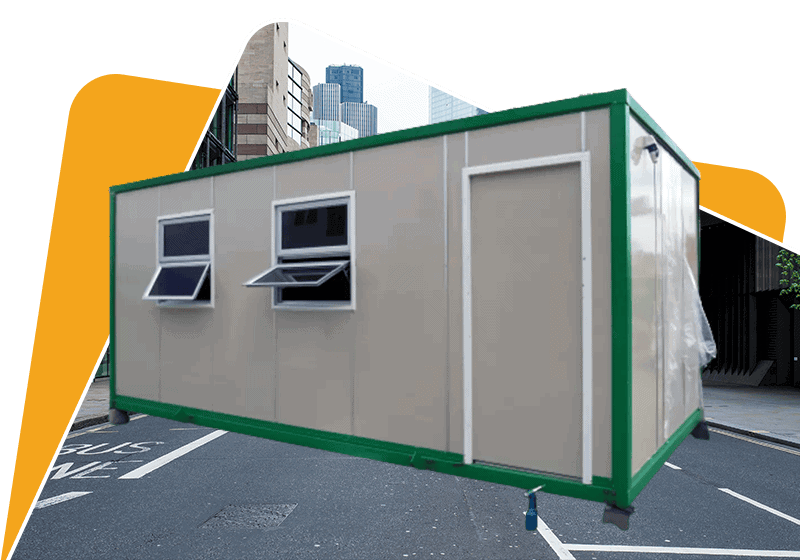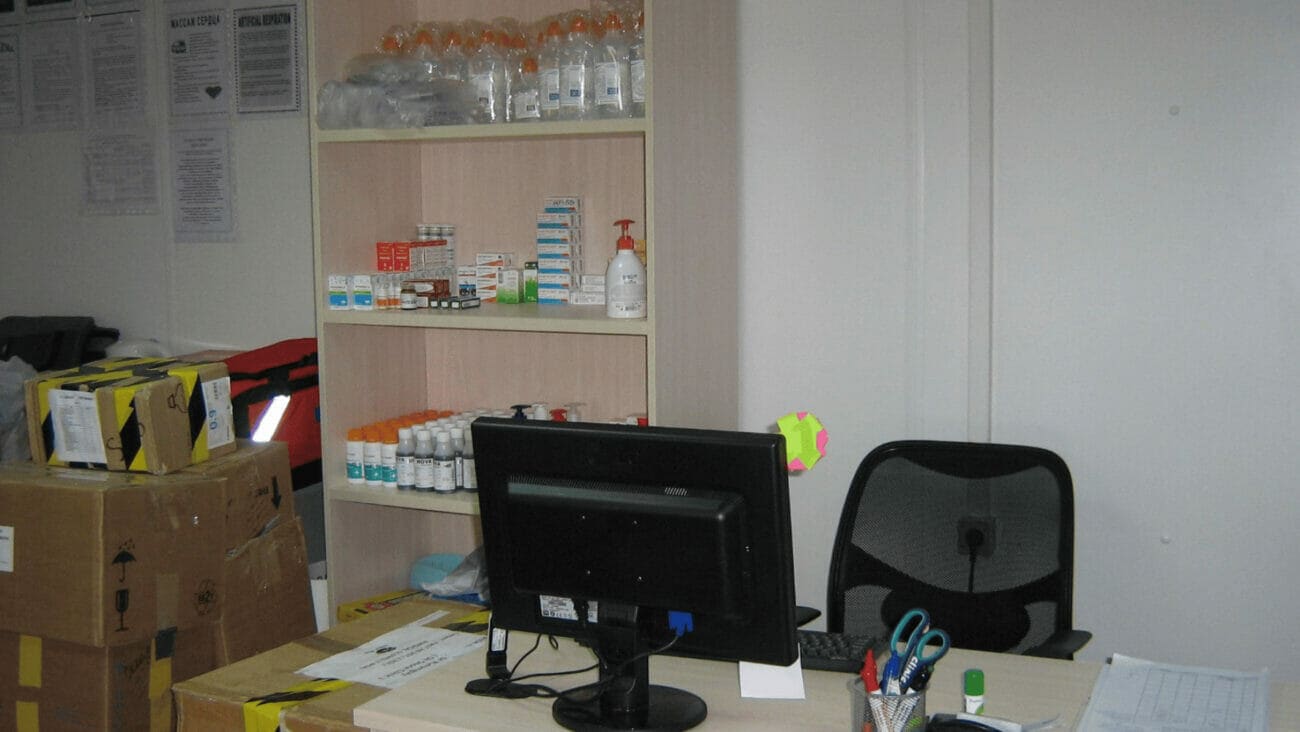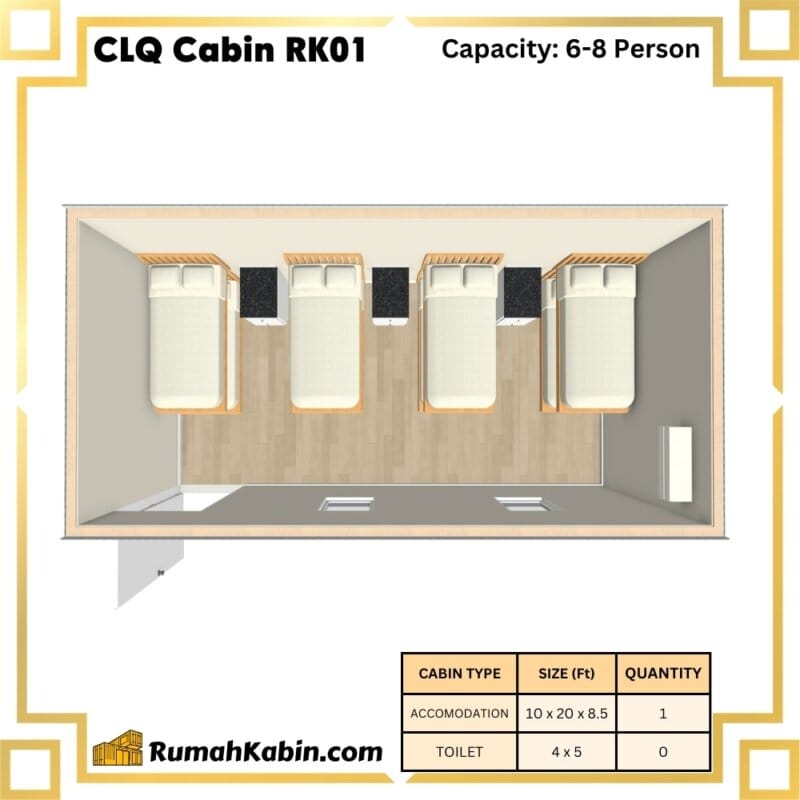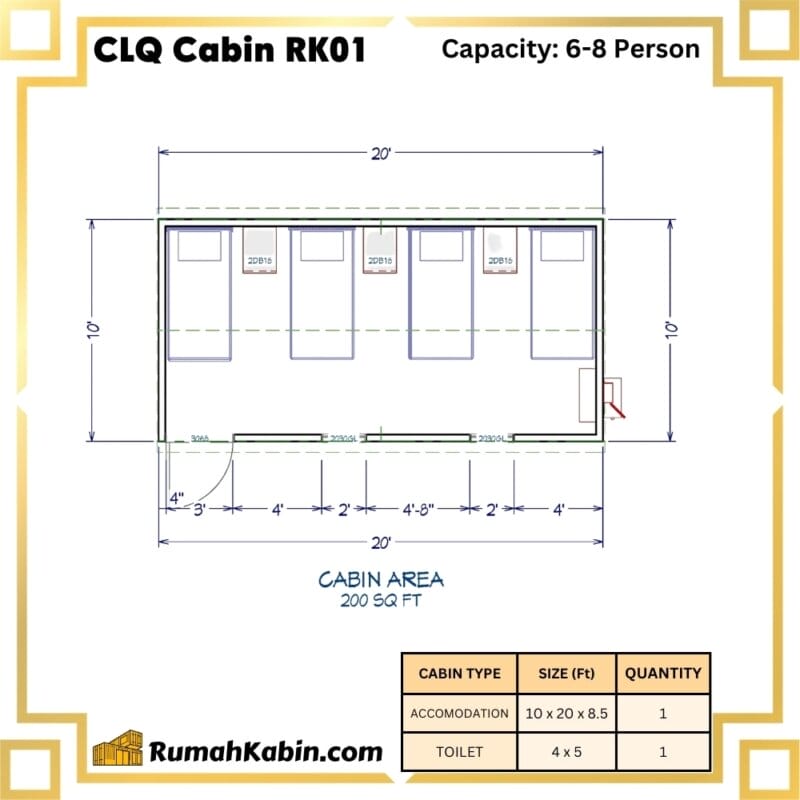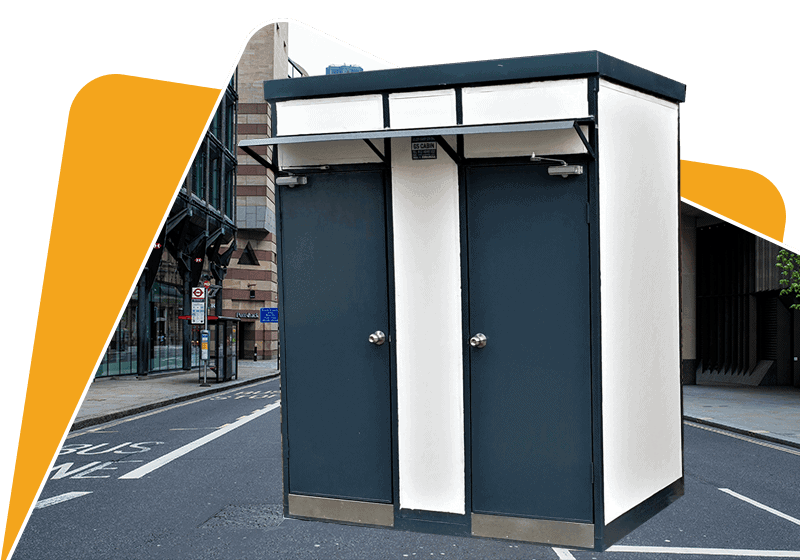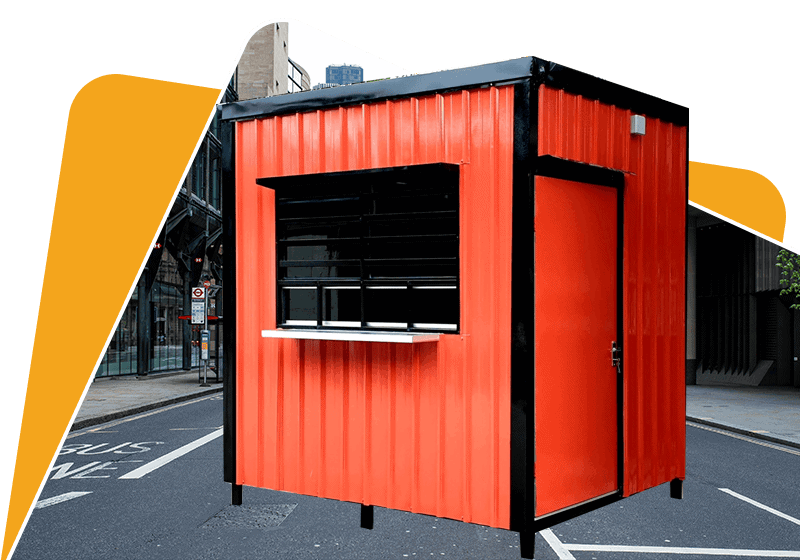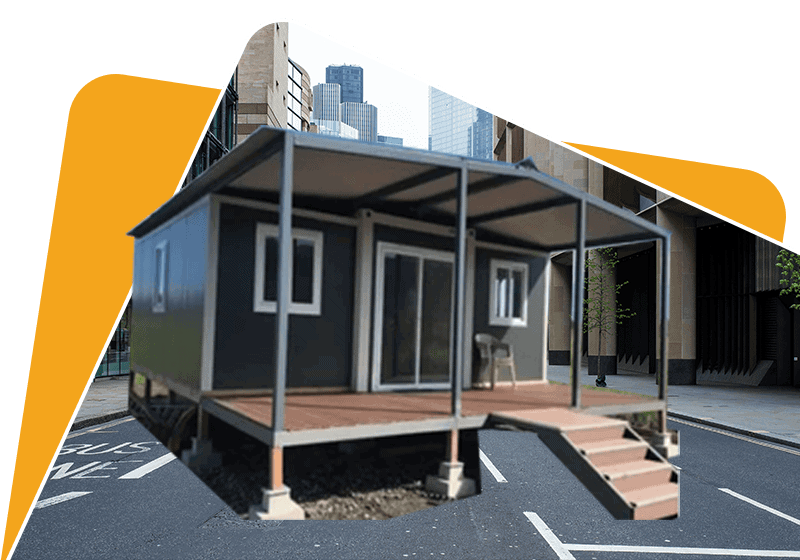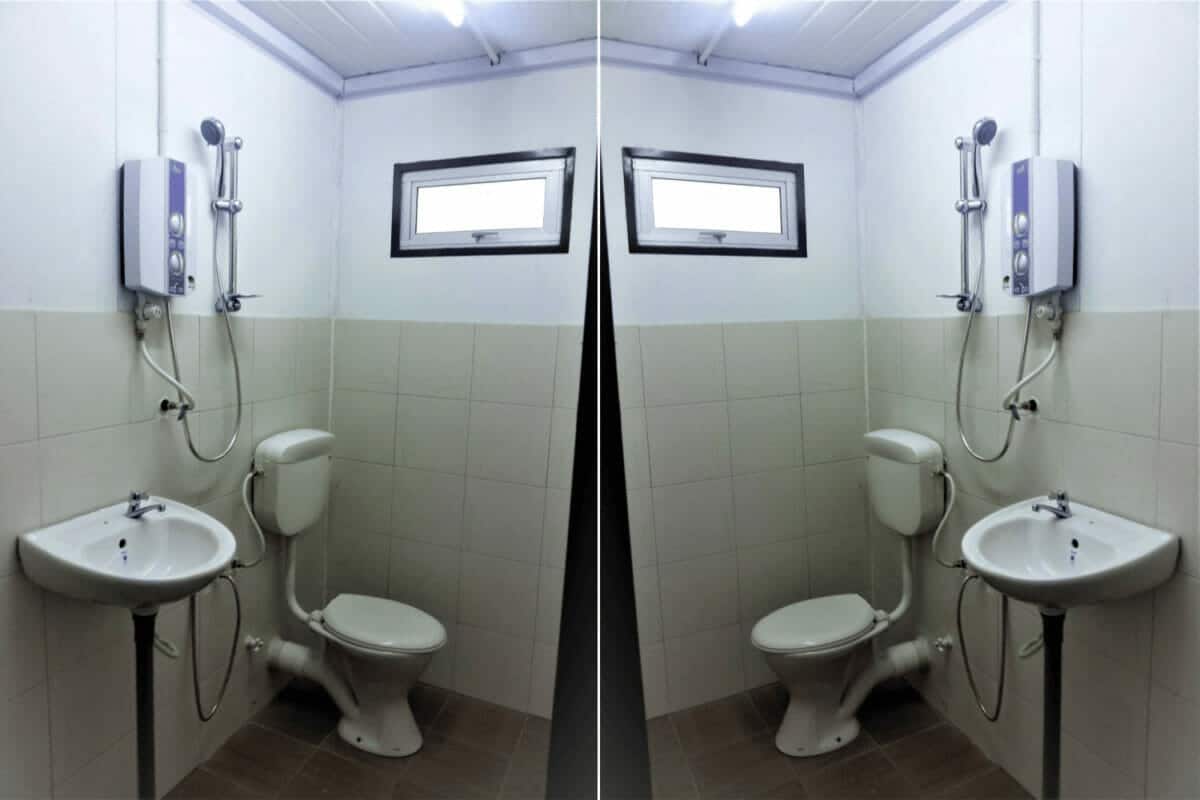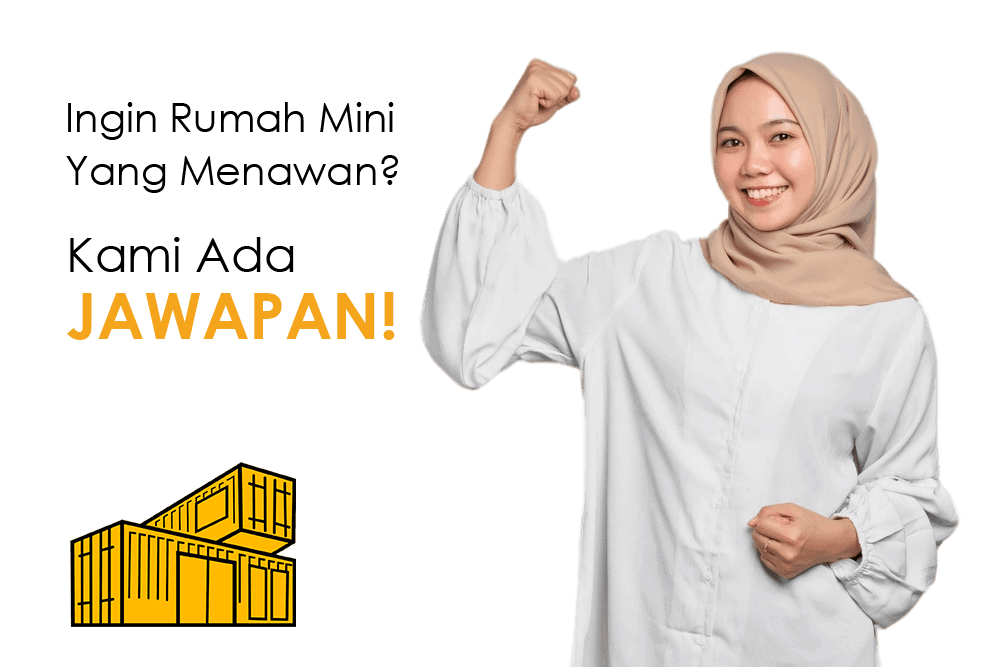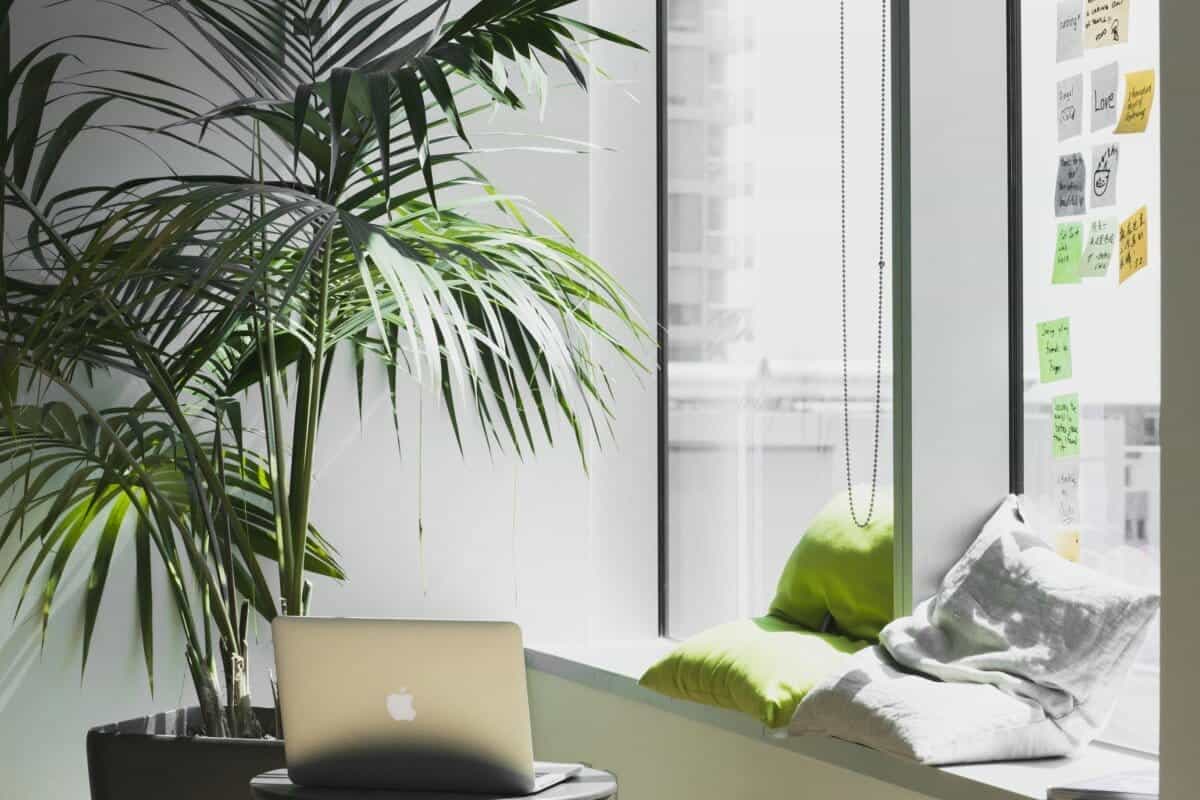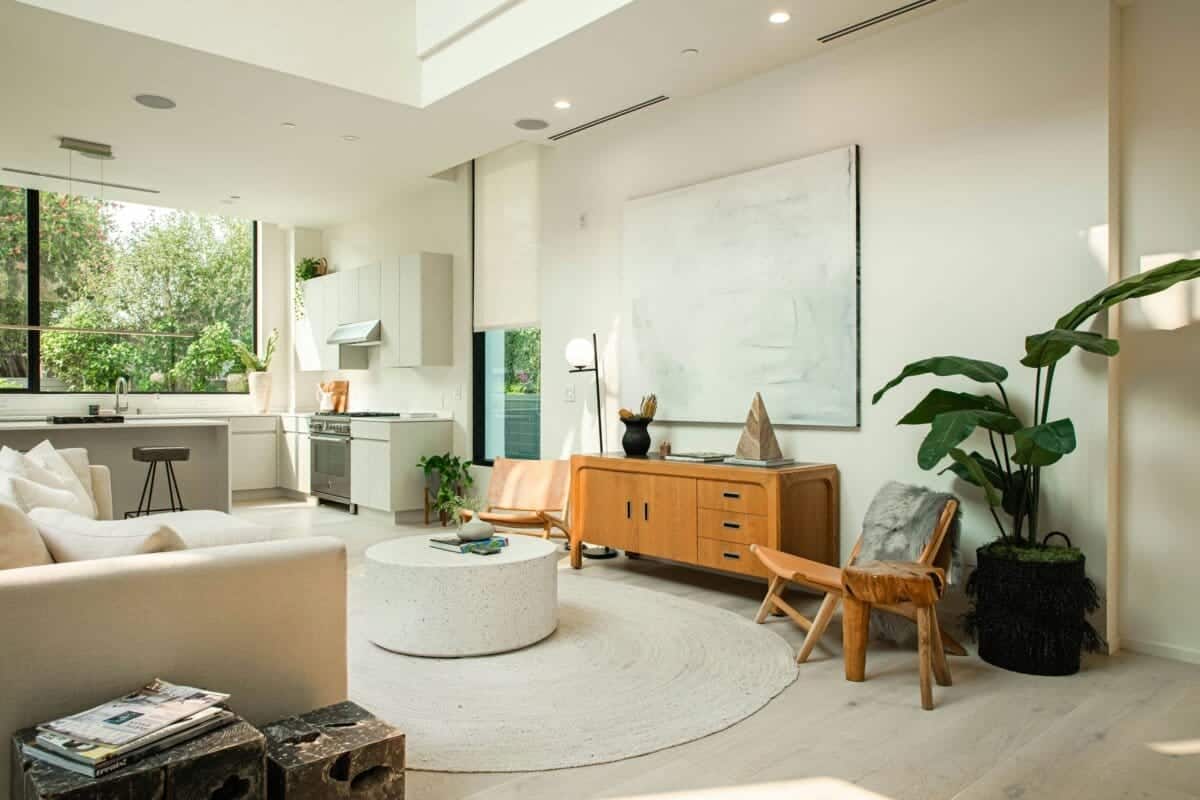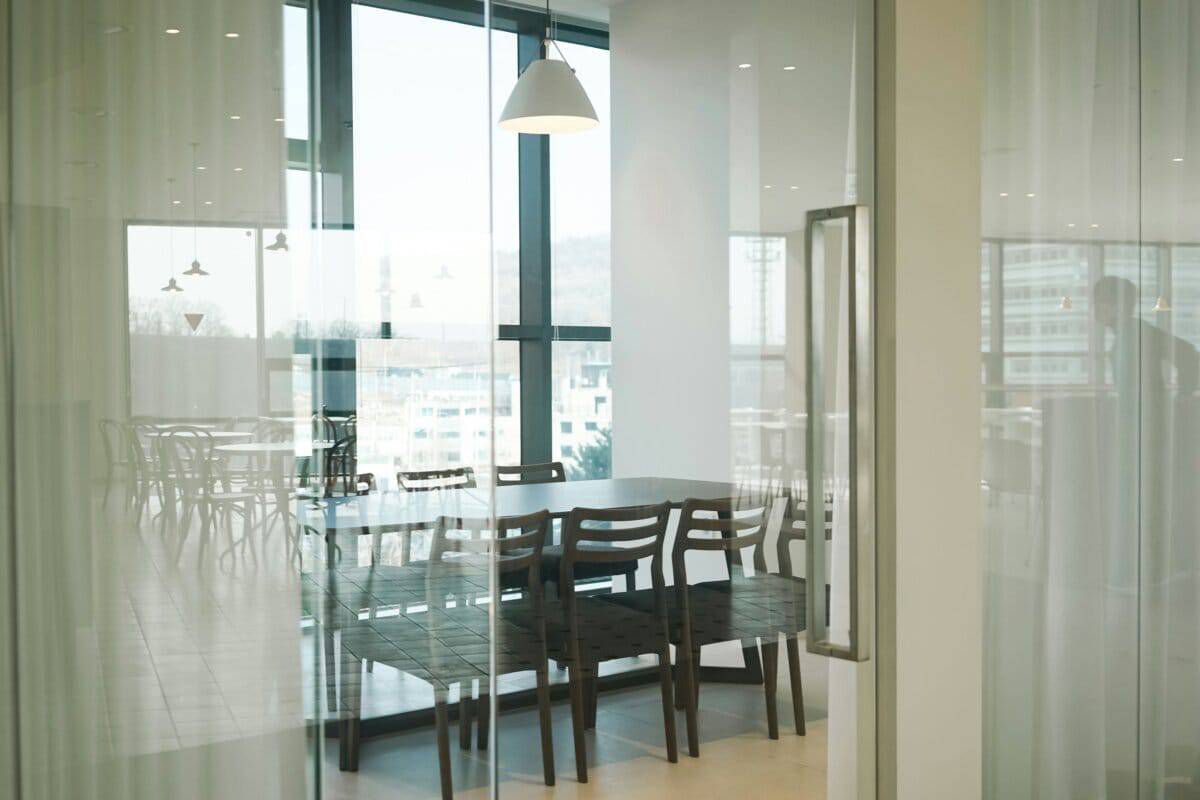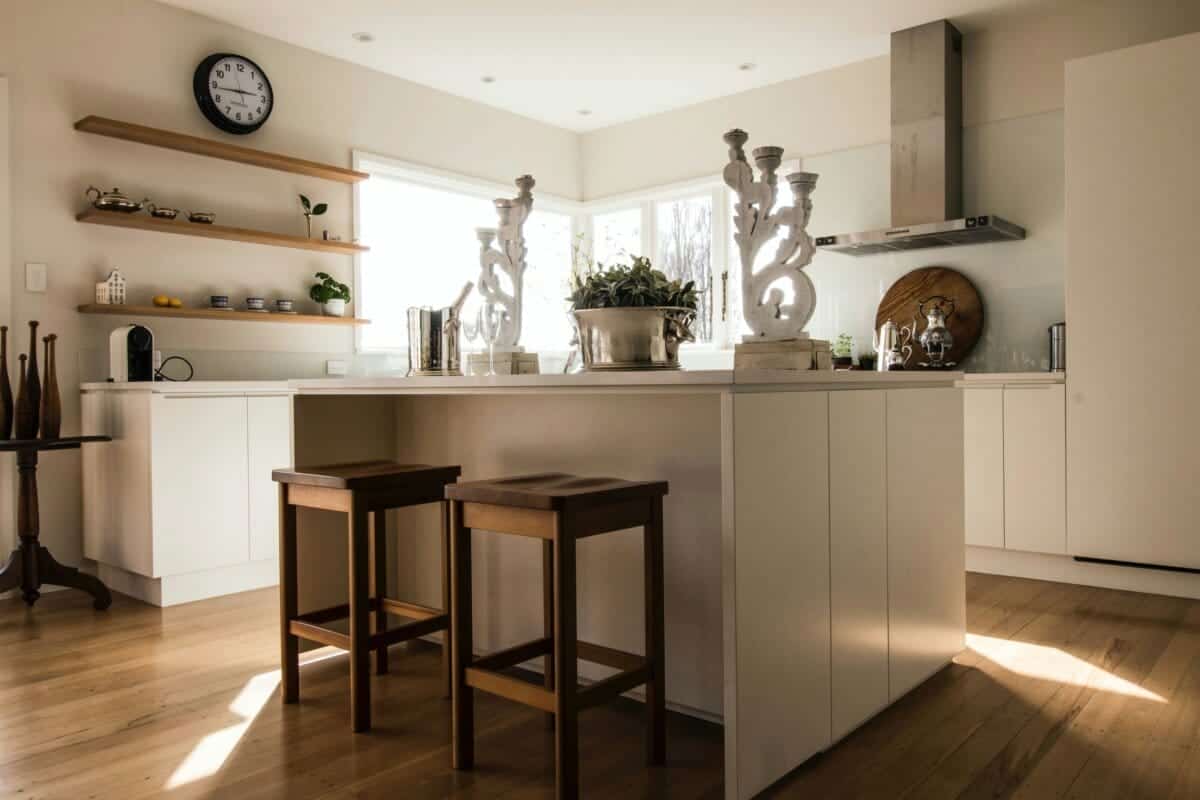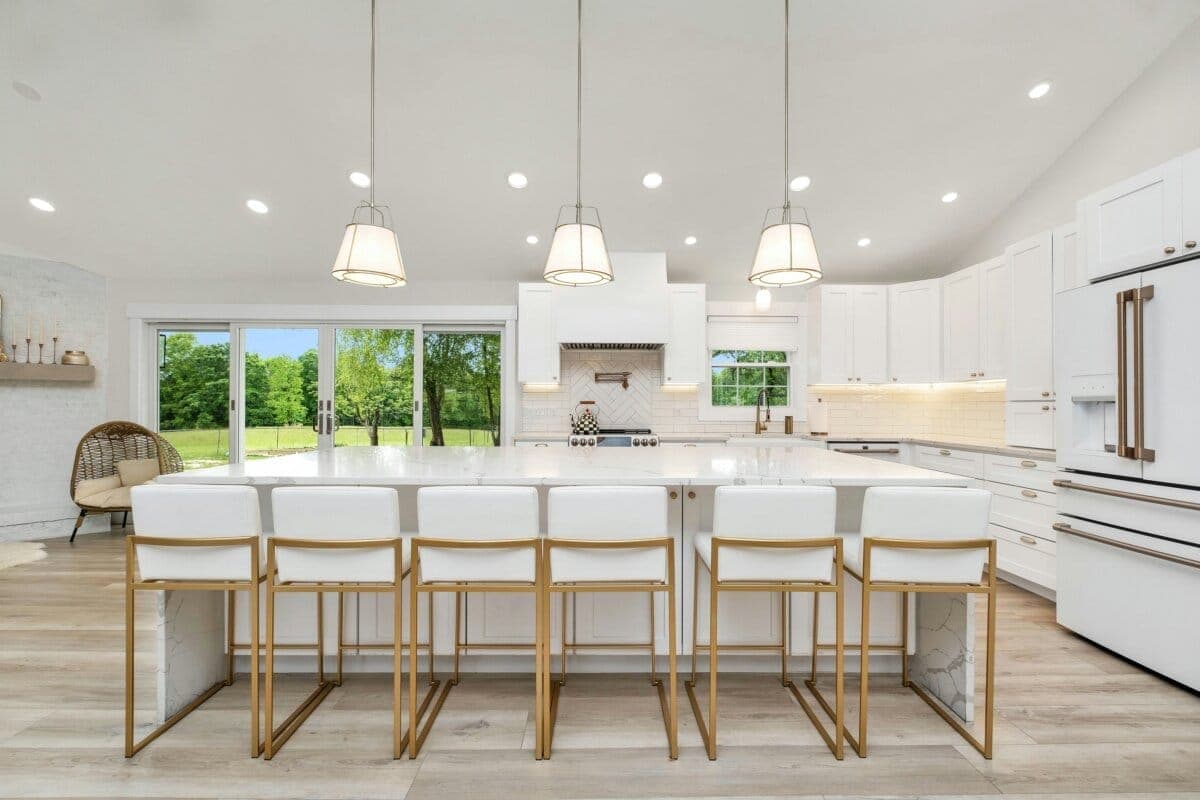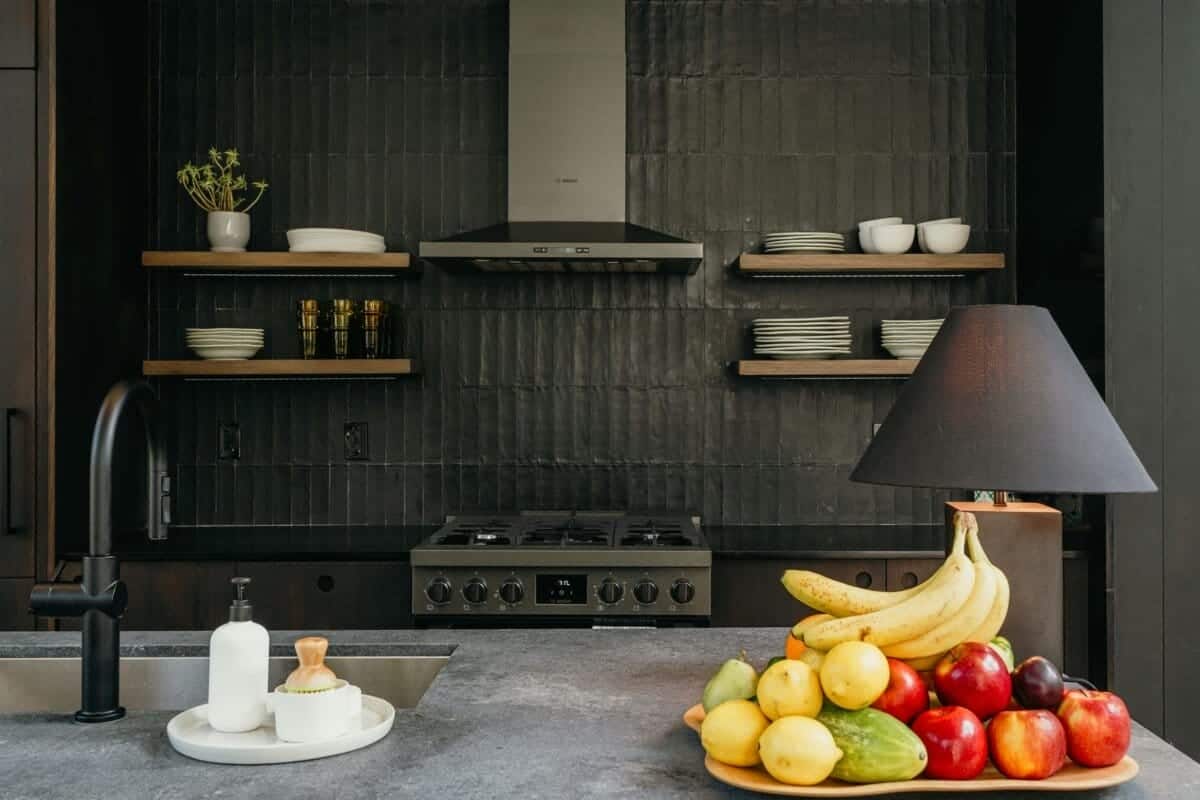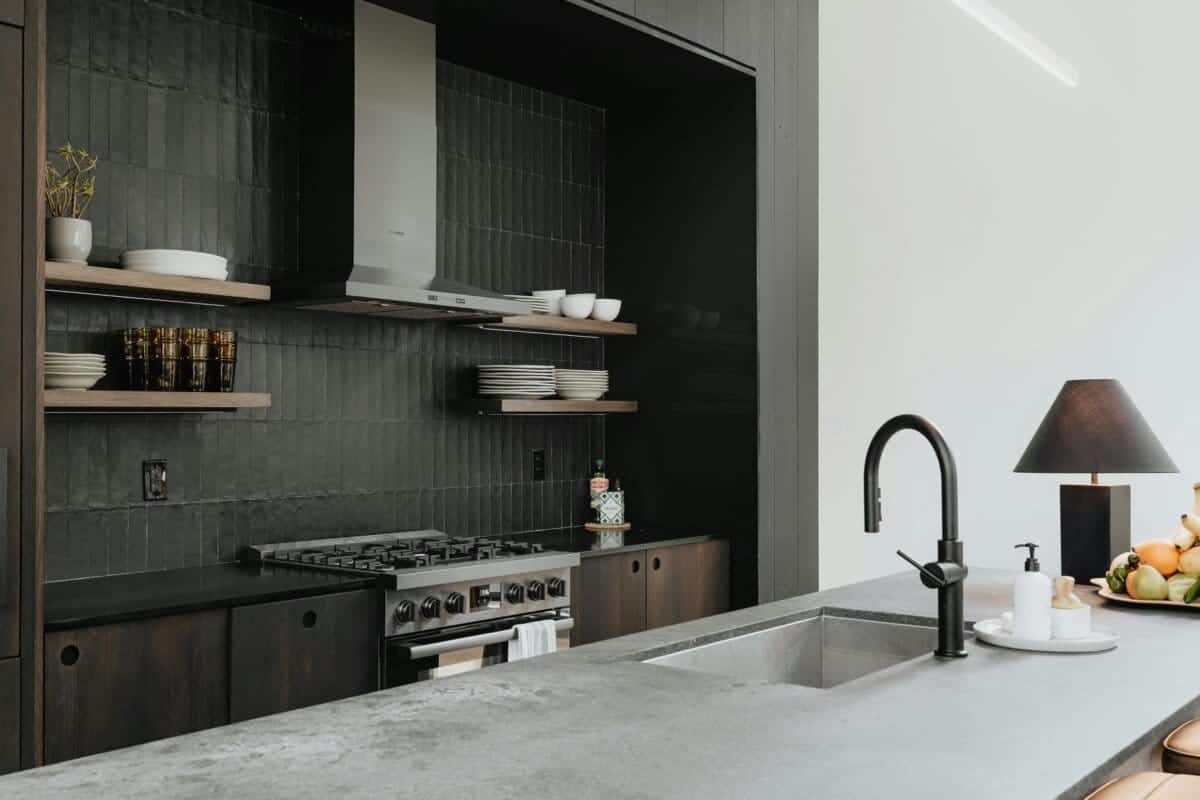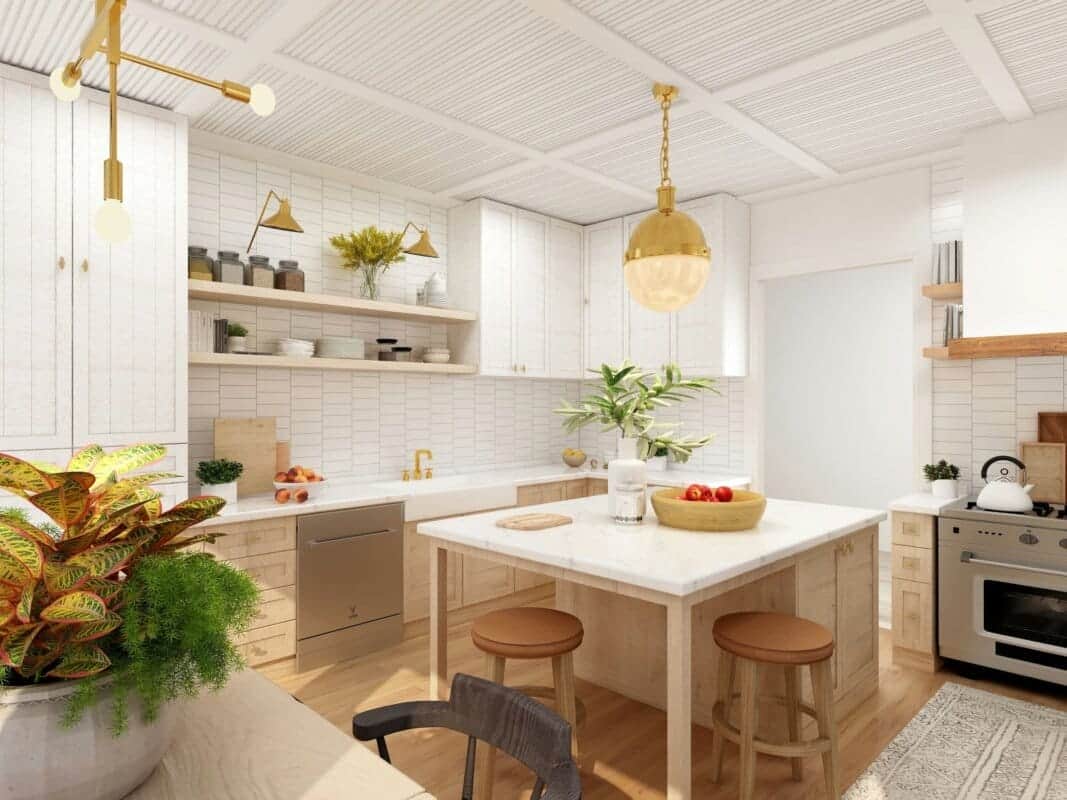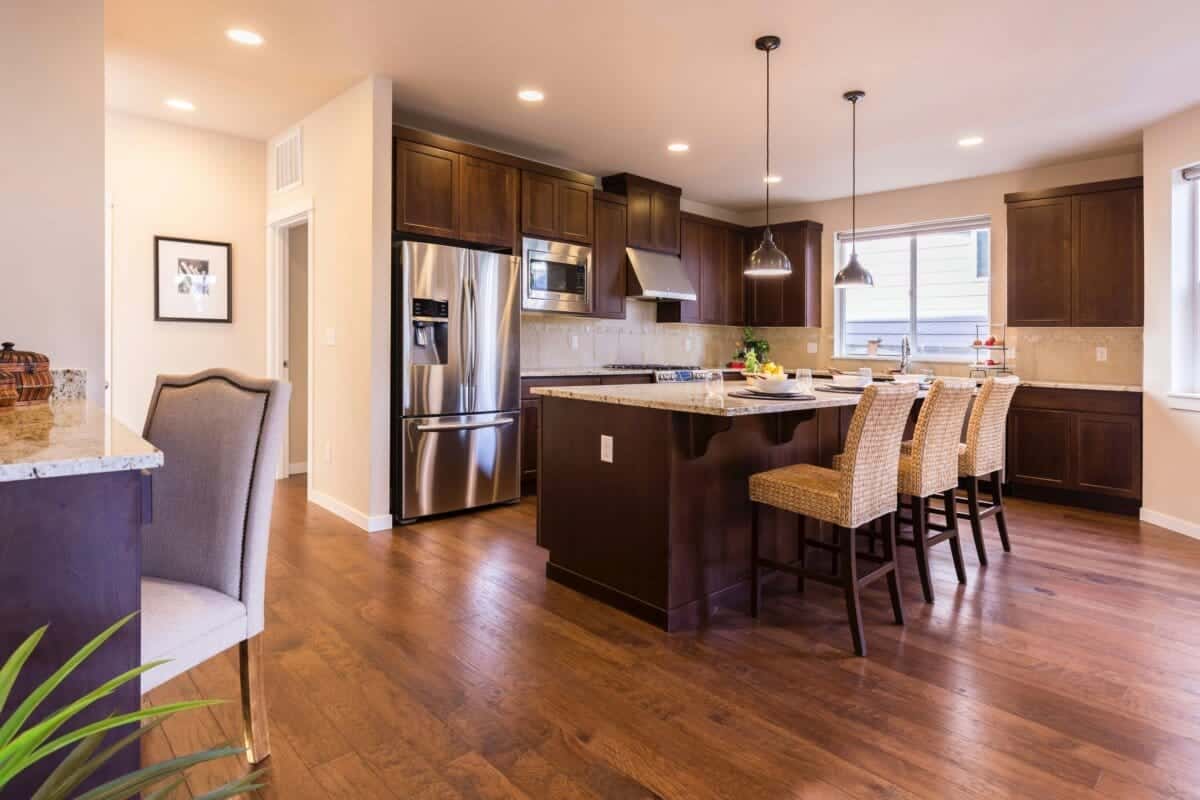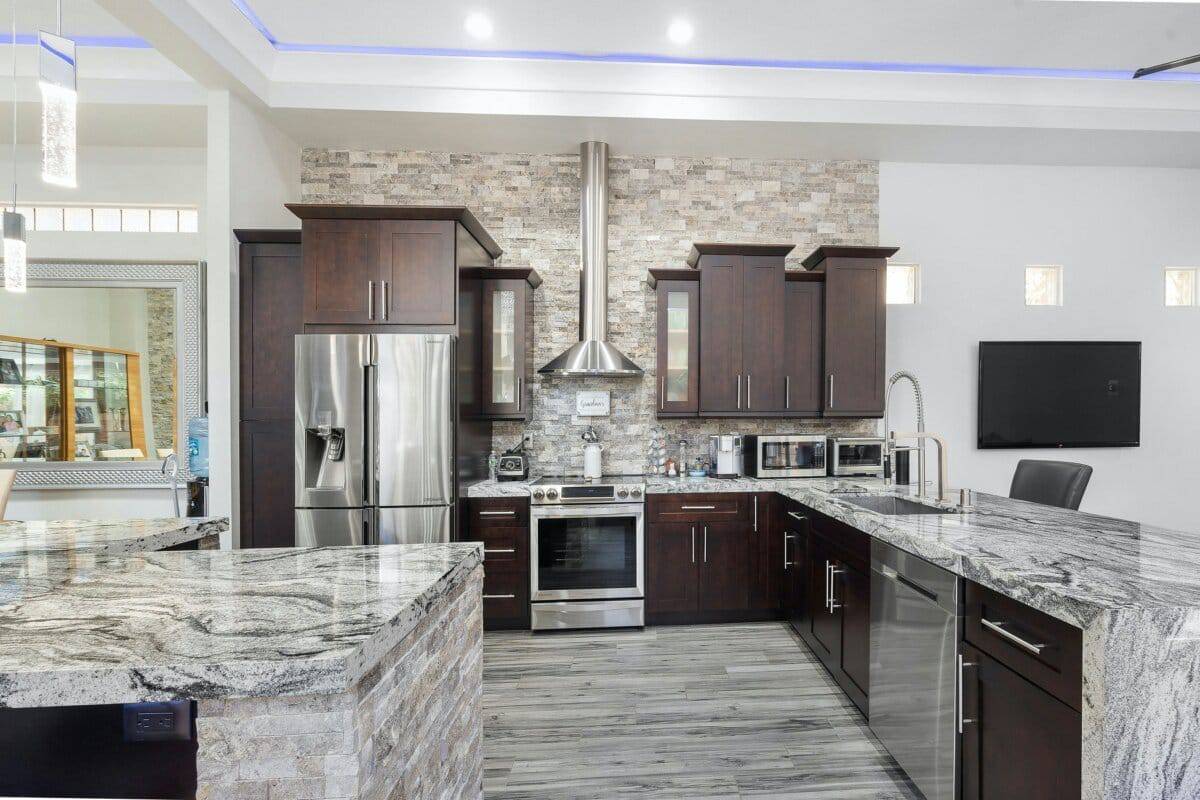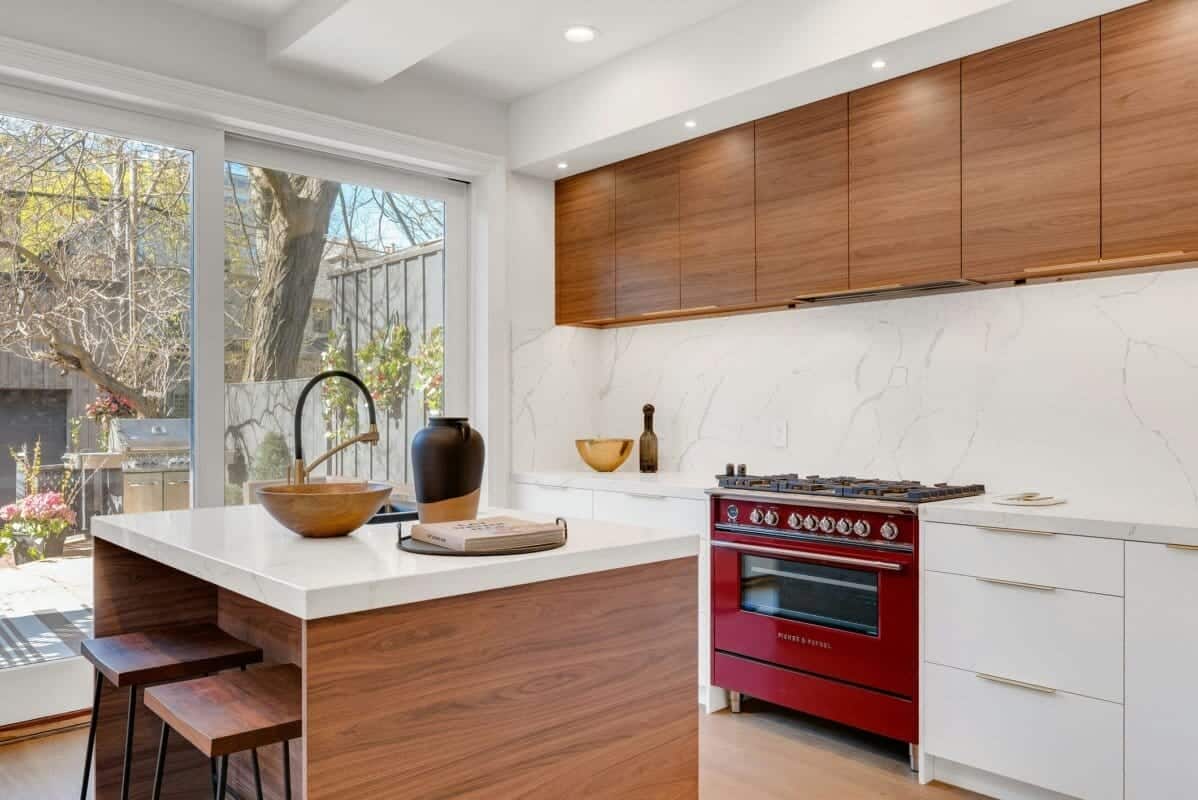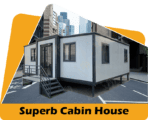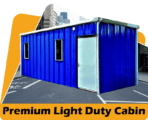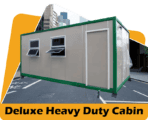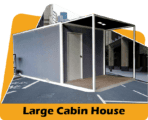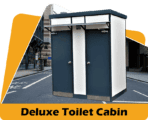10 Popular Questions about Portable Cabin in Malaysia
- What are the advantages of portable cabins in Malaysia?
- What are the different types of portable cabins available in Malaysia?
- What are the costs involved in getting a portable cabin in Malaysia?
- What are the regulations for setting up a portable cabin in Malaysia?
- How to choose the right portable cabin supplier in Malaysia?
- What are the best uses for portable cabins in Malaysia?
- How to customize a portable cabin for your needs in Malaysia?
- What are the steps involved in setting up a portable cabin in Malaysia?
- What are the maintenance requirements for portable cabins in Malaysia?
- How are portable cabins better than conventional buildings in Malaysia?
What are the advantages of portable cabins in Malaysia?
Portable cabins have become an increasingly popular building solution in Malaysia over the past few years. Here are some of the key advantages of using portable cabins:
Cost Savings
One of the biggest advantages of portable cabins is cost savings compared to constructing a conventional permanent building. Portable cabins are prefabricated in a factory so construction costs are lower. The materials like steel and aluminum are light yet durable, reducing material costs. You also save on labor costs as installation of a portable cabin is much faster and easier compared to building a permanent structure.
Mobility and Relocation
Portable cabins are designed to be mobile and can be transported to different sites when needed. This provides excellent flexibility as you can relocate the entire cabin structure conveniently. For businesses that need to frequently change sites or want temporary structures, portable cabins offer the perfect solution.
Speed of Deployment
Installing a portable cabin takes far less time compared to building a conventional structure. Most portable cabins can be fully installed and ready for use within 1-2 days. This enables rapid deployment and usage. For urgent business needs, temporary offices, interim housing etc, portable cabins allow quick setup.
Customization
Portable cabins can be easily customized to suit specific requirements in terms of size, layout, fittings etc. You can get cabins customized for usage as offices, housing, kitchens, washrooms etc. Different types of flooring, electrical fittings, ventilation can be fitted based on needs.
Temporary or Permanent Usage
Portable cabins offer excellent flexibility in terms of usage duration. They can be used as temporary structures for a few months or as semi-permanent structures for several years. The sturdy construction allows long term usage if required. You can easily dismantle and relocate the cabins when no longer needed.
Weather Resistance
Modern portable cabins are designed and constructed to be weather resistant and suitable for tropical climates like Malaysia. They provide effective protection from heavy rains, wind, heat and humidity. Good insulation keeps interiors comfortable.
Ease of Maintenance
Portable cabin exteriors like steel or aluminum surfaces are easy to clean and require minimal maintenance. The interiors utilize durable finishes that require simple upkeep. Overall maintenance is much easier compared to permanent buildings.
Safety
Reputable portable cabin manufacturers ensure high safety standards in design, materials and construction quality. Cabins are engineered to be earthquake resistant and able to withstand strong winds. Proper ventilation and fire safety features are incorporated.
Environmental Sustainability
Portable cabins utilize metal framing and panels which contain recycled content. The structures are energy efficient and use less material versus concrete/wood buildings. They can be disassembled and moved without demolishing structures. Overall portable cabins are an environmentally friendly building solution.
Aesthetic Options
Portable cabins are available in a wide range of colors, graphics and finishes. Cladding can be customized with materials like wood, glass etc to create pleasing designs. Interiors can be fabricates with drywall, wood paneling and different flooring options.
In summary, portable cabins provide many advantages like cost savings, ease of mobility, rapid installation, flexibility of usage, weather resistance, safety, sustainability and aesthetic options. These benefits make portable cabins a highly popular and viable construction option in Malaysia.
What are the different types of portable cabins available in Malaysia?
There are several types of portable cabins commonly used in Malaysia based on the intended application and requirements:
Office Cabins
Office cabins are portable structures designed to be used as office spaces. They come equipped with:
- Electrical wiring and lighting
- Air conditioning
- Tables, chairs and other office furniture
- Storage cupboards
- Internet and telephone connectivity
Office cabins provide an inexpensive and quick office setup. They are available in sizes from 160 sq ft mini cabins to large 1,000 sq ft cabins able to accommodate multiple employees.
Accommodation Cabins
Accommodation or housing portable cabins are equipped with amenities for comfortable living:
- Bedroom, bathroom, kitchenette
- Water heater, air-conditioning, fan
- Basic furniture like bed, wardrobe, chairs
- Kitchen appliances like cooker, refrigerator
Accommodation cabins are suitable for workers housing, temporary shelters, hostels and other residence needs. They come in sizes from 60 sq ft single units to large 500 sq ft family cabins.
Ablution and Toilet Cabins
These portable cabin units are designed specifically for providing toilet and washing facilities. They include:
- Toilet cubicles and urinals
- Wash basins
- Showers and dressing areas
- Water storage tanks
- Septic holding tanks
Ablution cabins provide essential sanitation solutions for remote work sites like plantations, farms, construction areas etc. They are available in various sizes and customizable layouts to suit needs.
Kitchen and Canteen Cabins
For food preparation and dining facilities, kitchen and canteen cabins are available:
- Cooking equipment like stoves, sinks
- Work tables, food prep areas
- Storage for groceries, utensils
- Ventilation fans, power points
- Dining tables with benches/chairs
These cabins are ideal for providing cooking and dining facilities at remote work sites, temporary food stalls, outdoor catering etc. Customizable to serve 10-300 people.
Portable Cold Rooms and Freezers
For cold storage needs, portable cold room cabins and freezer cabins are available in Malaysia:
- PU foam or stainless steel construction
- Cooling systems to maintain temperatures from -20°C to +8°C
- Options for refrigeration or freezer usage
- Available in sizes from 100 cu ft to 5000 cu ft capacity
Suitable for food suppliers, pharmaceuticals, logistics businesses that need temporary cold storage.
Customized Cabins
For specific business needs, fully customized portable cabins can be fabricated. Examples include clinic cabins, pharmacy cabins, shower cabins, laundry cabins, generator cabins etc tailored to your requirements.
Malaysia offers a wide range of portable cabin models and customization options to suit various temporary and semi-permanent building needs. By selecting the right type of portable cabin, you can get an economical and quickly installable solution.
What are the costs involved in getting a portable cabin in Malaysia?
Portable cabins provide a cost-effective building solution compared to conventional construction. Here are the typical cost components to consider when getting a portable cabin in Malaysia:
Portable Cabin Purchase
This is the upfront purchase price of the portable cabin unit. Prices vary based on:
- Cabin size – prices range from RM 5,000 for a small 60 sq ft up to RM 150,000 for a large 1000 sq ft cabin
- Specifications – higher specs like commercial grade wiring, plumbing, air-con increase costs
- Fittings – optional furniture, kitchen appliances etc add to price
- Customizations – unique layouts and features increase cabin price
Expect to budget RM 100 – RM 300 per sq ft for a basic portable cabin purchase. Luxury models can cost more.
Transportation
Delivering the portable cabin to your designated site will incur transportation charges. This could be:
- Land transport – lorry trailers suitable forSite transport over short distances up to 50km. Rate approx RM 2-3 per km.
- Sea freight – for East/West Malaysia delivery or export. Cost depends on location.
- Crane lifting – sometimes needed to position cabins, average RM 800 – RM 1,500 per crane.
Foundation Works
Portable cabins require suitable foundation works at site:
- Concrete, wood or metal platform base
- Securing to ground using anchors or supports
- Leveling and alignment of cabins
- Steps/ramps for entry access
Foundation works typically cost RM 20 – RM 40 per sq ft of cabin size.
Electrical Wiring
Generator power setup or connecting to grid power supply:
- Generator and fuel supply
- Power cables and switchboard
- External wiring and connections
- Electrician fees for installation
Budget RM 6,000 – RM 12,000 for electricals for a basic cabin.
Plumbing and Sanitary
For water supply, sewage and drainage:
- External water tank and piping
- Internal plumbing and fittings
- Waste water management – septic tank etc
- Plumber charges
Plumbing costs depend on cabin facilities. Allocate RM 3,000 – RM 8,000.
Assembly and Fitting Out
Technical personnel is required for:
- Site preparation and foundation laying
- Unloading and placing cabins
- Inter-assembly of cabin sections if required
- Interior finishing and fitting outs
- Testing of utilities and connections
Expect total assembly, fitting out and testing costs of RM 15,000 – RM 40,000.
Permits and Licenses
Relevant permits from local authorities are required before operating cabins. Charges vary by location – allocate RM 3,000 – RM 10,000.
By factoring in these key cost elements, you can budget accurately for acquiring and setting up your portable cabin. Typical total investment would be RM 150,000 to RM 500,000, varying based on cabin specifications, customization and site requirements.
What are the regulations for setting up a portable cabin in Malaysia?
Portable cabins offer a quick and convenient construction solution. However there are certain regulations that need to be complied with for setting up a portable cabin legally in Malaysia. Here are the key permits and guidelines to know:
Land Usage and Planning Permits
The type of land will determine what structures can be erected. For commercial or industrial land, portable cabins are usually allowed. For agricultural or residential land, approval must be obtained for temporary structures. Relevant zoning regulations and plot ratios must be adhered to.
The National Land Code 1965 covers development on land in Peninsular Malaysia. The Town and Country Planning Act 1976 (Act 172) outlines the overall planning guidelines. In East Malaysia, land use comes under the jurisdiction of the Sabah Town and Country Planning Ordinance 1950 and Sarawak Land Code.
Based on the site, specific permits must be obtained from the relevant local Municipal Council (Majlis Perbandaran) or District Council (Majlis Daerah). For Kuala Lumpur, approval is required from Dewan Bandaraya Kuala Lumpur (DBKL).
Building Plan Approval
For setting up any type of building structure permanent or temporary, a building plan must be submitted and approved. This is as per the Street, Drainage & Building Act 1974 (Act 133).
The building plan submission for portable cabins must show:
- Site layout, foundation details
- Cabin elevations, size and dimensions
- Cabin construction specifications
- Electrical, water and drainage layouts
Approvals for temporary structures are typically faster. But all regulations regarding setbacks, height limits, utilities etc still apply.
Certification from BOMBA
Malaysia’s Fire and Rescue Department (Bomba) needs to inspect and certify that the portable cabins meet safety standards as per the Fire Services Act 1988. Proper emergency access, fire extinguishers, exit signs and other life safety systems must be provisioned.
Guidelines from DOSH
Under the Department of Occupational Safety & Health (DOSH), various guidelines are in place for worker housing and amenities. For example, the Workers’ Minimum Standards Of Housing And Amenities Act 1990 (Act 446) covers standards for housing, toilet, kitchen facilities for plantation and mineral mining workers. Similar regulations apply for portable cabins being provided as workers amenities.
Permits from Local Authorities
Before operating portable cabins, relevant permits must be obtained from City Hall or Municipal Council. This includes business operating license, signboard permit, septic tank permit and other approvals required for the specific cabin use.
Compliance with land use, building plan approval, fire safety, worker housing standards and local authority permit requirements is mandatory for legal setup of portable cabins in Malaysia. Consulting with an experienced portable cabin supplier will help navigate the regulations.
How to choose the right portable cabin supplier in Malaysia?
Selecting a good portable cabin supplier is crucial for getting a quality solution that meets your requirements. Here are important factors to consider when choosing a portable cabin supplier in Malaysia:
Variety of Cabin Designs
Look for a supplier that offers a wide range of cabin sizes, layouts, specifications and customization options. This will allow you to get a solution tailored to your exact needs. They should have suitable cabin designs for uses like offices, housing, kitchen, toilets etc.
Use of Quality Materials
The construction materials used like steel, aluminum, wood, glass should be of good quality for durability and weather resistance in Malaysia’s tropical climate. Internal fixtures and fittings should also be robust and last for years of usage.
Customization Capabilities
A good supplier will be able to fabricate fully customized portable cabins based on your specifications. This includes modifications to layout, windows, electrical points, interior finishes etc. They should have experienced technical personnel who can translate your requirement into a practical cabin design.
Reasonable Pricing
Compare the pricing of different suppliers for similarly specified cabins. Opt for a supplier that provides good value without compromising on build quality. Be wary of prices that seem too low, as it may indicate poor materials/workmanship.
Strong Track Record
Choose an established portable cabin company with many years of experience in the industry. Check their project portfolio to see the successful delivery of past projects in Malaysia and internationally. A long track record indicates reliable product quality and service.
Quick Manufacturing and Delivery
Timely delivery is important to get your cabins operational quickly. Opt for a supplier with rapid fabrication in their own factory and ready inventory. They should be able to deliver standard cabin models within 1-2 weeks from order and customize cabins within 3-4 weeks.
Professional Installation
The supplier should have qualified personnel to undertake professional installation at your designated site. This includes transportation, foundation preparation, assembly, fittings, testing and commissioning.
Warranties
Opt for suppliers that provide reasonable warranties of 1 year or more. This assures you of free repairs or replacements if any manufacturing defects are found in the cabins.
After-Sales Support
Choose a supplier with strong after-sales service to attend to any issues or maintenance needs that crop up after the cabin setup. They should have a dedicated maintenance team for prompt response.
By keeping the above factors in mind, you can shortlist and choose a good portable cabin supplier in Malaysia capable of fulfilling your project requirements. Take time to evaluate multiple suppliers before placing your order.
What are the best uses for portable cabins in Malaysia?
Portable cabins in Malaysia are suitable for a wide variety of applications owing to their versatile nature. Here are some of the best and most common uses:
Temporary Offices
Portable cabins provide ready made office spaces that can be set up quickly at project sites for the duration of the project. They offer an economical solution for temporary office needs of construction companies, property developers, oil & gas contractors working on short term projects. Cabins can be moved and redeployed easily once a project completes.
Interim Staff Accommodation
Companies setting up new facilities or mines in remote locations can use portable cabins to provide living quarters for their construction crews and initial staff batches. Cabins fitted with bedrooms, kitchens and toilets provide comfortable housing. They can be used for 6-24 months until permanent accommodations are built.
Disaster Relief Shelters
During natural calamities like floods, tsunamis and earthquakes, portable cabins are invaluable to provide emergency shelters for displaced people to stay. Relief agencies can quickly deploy them as temporary accommodation and facilities.
Portable Classrooms and Labs
Schools that lack sufficient classrooms or need additional computer labs, science labs etc. can utilize portable cabins as they can be setup within existing compounds. This provides a quick and economical solution compared to constructing new blocks.
Portable Kitchens
Catering businesses can setup portable kitchen cabins for mobile catering at events, festivals and functions. Cabins fitted with commercial cooking equipment offer a self-contained cooking facility that can moved conveniently to serve customers on location.
Portable Clinics and Healthcare
In rural areas lacking medical infrastructure, portable clinic cabins fitted with consultation rooms, pharmacies, dental chairs etc. enable pop-up clinics to provide healthcare access. They can also be used as mobile COVID-19 testing centers.
Portable Shops and Showrooms
Retail businesses can quickly setup product exhibition cabins or portable shops using customized portable buildings. These can be used at trade fairs, expos, pop-up events before shifting to the next event.
Portable Lavatories
Hygienic toilet and bathroom cabins can be deployed at large gatherings and events to provide convenient sanitation facilities for crowds.
Site Offices at Construction Sites
Developers and contractors can setup portable site offices at their construction projects to house their site teams. These provide amenities like meeting rooms, staff rooms, kitchens and toilets onsite for the convenience of the staff.
Mine Site Accommodation
Mining companies can provide comfortable housing for hundreds of employees at their remote mine sites using portable accommodation cabins. This is a cost-effective way to give workers furnished rooms near the mines compared to constructing permanent housing blocks.
Military Barracks
Army camps for border security forces can utilize barracks and bunk houses made from portable cabins. These sturdy structures can be speedily deployed in remote border areas. Their portable nature also allows relocation whenever needed.
Portable Cold Storage
Perishable items suppliers, pharmaceutical companies, hospitals etc. can install portable cold room and freezer cabins. These offer plug-and-use cold storage capacity for items like food, medical supplies, chemicals etc. Useful for temporary storage needs.
Training Facilities
Cabins can be customized into portable training rooms equipped with the needed furniture, projectors etc. These can be used to conduct short courses, workshops, seminars at schools/colleges lacking extra space or companies without training rooms.
Warehouse Structures
Logistics firms can deploy inexpensive portable cabins as temporary warehouses for storage of goods, inventory and equipment at distribution hubs or seaports. Being modular structures, warehouse capacity can be expanded easily by adding more cabins.
In summary, portable cabins in Malaysia serve a very wide range of uses for both private companies as well as community applications owing to their versatility, rapid deployment capability and cost economics.
How to customize a portable cabin for your needs in Malaysia?
One of the biggest advantages of portable cabins is the ability to customize them to match specific requirements. Here are tips on how to customize portable cabins in Malaysia:
Define Purpose of Use
Firstly, be very clear on how you intend to use the cabin. Is it for office, accommodation, kitchen, laboratory, clinic etc? Defining the application will determine the layout and fittings needed. Share details with your portable cabin supplier so they understand your usage.
Specify Dimensions
Portable cabins are available in a range of standard sizes from 10ft x 8ft to 20ft x 50ft. You can also specify custom sizes like 12ft x 30ft or 8ft x 40ft as per your area requirements. The supplier can fabricate an exact cabin size for your needs.
Choose Number of Rooms
Depending on your usage, you can specify cabins with 1 room or multiple rooms divided into different functional areas. For staff accommodation, individual cabins or shared rooms can be provided. For offices, separate cabins for reception, meeting room, work stations etc. may be suitable.
Select Interior Wall and Ceiling Finishes
You can opt for plywood, laminate, gypsum board, glass paneling or other finishes for the interior cabin walls. Ceiling options include modular acoustic tiles, gypsum ceiling, plywood lining etc. This defines the overall look and durability.
Pick Flooring Type
Choose flooring suitable for your application – vinyl, tiles, cement screed, raised flooring etc. Options like timber or parquet flooring can also be installed for more premium cabin interiors. The supplier can install the specified flooring.
Design Custom Furniture
For office cabins, specify your needed workstations, meeting room tables, reception counter, storage shelves etc. Accommodation cabins can have customized beds, wardrobes, kitchen cabinets etc. designed. Your unique furniture needs can be fulfilled.
Specify Electrical Fittings
Indicate your interior lighting needs, power sockets, wiring requirements, internet points etc. so these can be provisioned. Higher capacity electrical setup is possible for IT offices, commercial usage etc.
Select Plumbing Options
Depending on water supply available, you can opt for internal water tanks, sink taps, shower fittings, water heaters etc. Sewage management like septic tanks can also be integrated under the cabin.
Choose Ventilation
Go for glass windows, exhaust fans, air-conditioners depending on your ventilation requirements. Cooling needs vary based on cabin location and usage.
Select Safety Equipment
Specify needs like fire extinguishers, smoke detectors, emergency lighting, exit signs etc. to be installed. This ensures the cabin meets safety standards for occupancy approval.
Add Branding and Visual Identity
You can customize the cabin exteriors with your corporate colors, logo and signage. This gives your cabins a unique visual identity.
By providing the above inputs to your portable cabin supplier, you can get a tailored solution matching your specific operational needs at the site.
What are the steps involved in setting up a portable cabin in Malaysia?
Installing a portable cabin requires careful preparation and systematic execution. Here are the typical steps involved in setting up a portable cabin in Malaysia:
Site Evaluation
Conduct site visits to check terrain, access roads, space availability and ingress/egress routes. Services like electrical, water and sewage availability need to be verified. Site plans must be studied for any constraints or special preparations needed.
Foundation Design
Suitable foundation has to be designed based on site soil condition and portable cabin size/weight. Materials like concrete, raised platforms or metal skids are commonly used. Foundation plan is needed for local authority submission.
Cabin Customization
Based on your interior fit out needs, electrical and plumbing requirements, the cabin can be factory customized with fittings, wiring, utility connections etc. This prepares it for rapid installation onsite.
Transport Preparation
Ensure access roads to the site can accommodate tractor trailers/hydraulic cranes needed for cabin delivery. Specific transport permits may be needed for road access or if oversized deliveries. Cabin panels may need to be split for transportation if site access constrained.
Foundation Works
Prepare the leveled ground with the designed foundation as per approved drawings. Ensure accurate alignment to ease cabin placement. Utility connection points to be readied. Cure concrete sufficiently before cabin installation.
Cabin Delivery
Transport the cabin securely to the site using suitable vehicles. Breakdown large cabins into transportable sections if necessary. Use cranes/forklifts at tight access sites.
Cabin Placement
Lift and carefully place the cabin over the prepared foundation using cranes or hydraulic lifting equipment. Align perfectly and secure the cabin properly to the foundation using bolts/clamps as designed.
Assembly and Connections
Assemble the various cabin sections together using connecting joints and sealants to ensure weatherproofing. Connect all external utilities like electrical, water and sewage to hook up the cabin.
Fit Out and Testing
Complete all interior fit outs like partition walls, flooring, lighting, plumbing fittings etc. if not pre-installed at factory. Test all power, water and drainage connections thoroughly.
Inspection and Approvals
Relevant authorities like Fire Department, Municipal Council etc. will inspect site installation, safety systems, utilities etc. before approving occupancy. Licence may be needed for commercial operation of the cabin.
Access Provisioning
Provide steps/ramps, pathways and access doors as needed for entry and exit from the cabins. Install handrails if required for safety. Complete any other final exterior works.
Commissioning
Upon obtaining all approvals do a final verification of the complete portable cabin setup. Confirm safety, proper utilities functioning and quality standards. Get user sign offs before handing over for occupation and usage.
With careful planning and systematic execution, portable cabins can be installed quickly and properly to meet all regulations. This enables fast deployment and usage.
What are the maintenance requirements for portable cabins in Malaysia?
Portable cabins are durable structures designed for long, trouble-free usage. However, periodic maintenance is required. Here are the key maintenance aspects for portable cabins in Malaysia’s climate:
Cleaning Exteriors
Wash the exterior cabin walls regularly to remove dust, dirt and grime build up. Use mild detergent and water avoid corrosion of metal surfaces. This maintains the exterior appearance and prevents rusting.
Checking Exterior Seals
Inspect seals around doors, windows, panel joints etc. to ensure there is no gap or damage. Replace worn out seals to prevent water ingress or pest entry into cabins during rains. Proper sealing is crucial.
Clearing Drainage
Ensure roof rainwater downpipes, site drainage channels are free flowing and clear of debris. This prevents water logging or flooding around the cabins during heavy rainfall.
Testing Smoke Detectors
Smoke detectors and fire alarm systems should be tested monthly by pressing test buttons to confirm they are functional. Replace batteries when low. This is an important fire safety requirement.
Pest Control
Do periodic pest control using proper chemical treatments or bait traps around the cabins’ exterior to keep away termites, rodents and other pests. This prevents damage to the structure and unsanitary conditions.
Checking Fittings
Inspect door hinges, handles, latches, locks and other fittings monthly to look for rust, damage or need for lubrication. Repair or replace damaged fittings immediately.
Electrical Inspections
Get a licensed electrician to annually inspect the electrical wiring, boards, sockets, switches etc. Rectify any damaged components like loose wiring, burnt plug points etc. immediately. This prevents any electrical hazards.
Plumbing Maintenance
Check water piping, taps, showers, sink drainage periodically for leakages or blockages. Get a plumber to service them annually. Repair leaks promptly to prevent water damage.
Interior Repainting
Repaint interior walls periodically, especially if there is humidity and moisture build up. This refreshes the interiors, prevents ugly mildew growth and extends the cabin lifespan.
Waste Management
If septic systems are used, desludge tanks periodically. For portable toilets, empty holding tanks regularly via vacuum trucks. Follow all environmental regulations for waste handling.
By sticking to a proper maintenance schedule, portable cabins can deliver many years of trouble free use. Maintenance costs are low and worth the investment.
How are portable cabins better than conventional buildings in Malaysia?
Portable cabins have certain advantages compared to conventional permanent buildings in Malaysia:
Faster Deployment
As cabins are prefabricated, they can be delivered and installed on site within 1-2 weeks, ready for usage. Constructing a conventional building takes months involving extensive site works, building, fittings etc.
Relocation Flexibility
Portable cabins can be easily dismantled and transported to new locations conveniently. This is not possible with permanent buildings. Cabins offer excellent redeployment flexibility for temporary projects.
Lower Costs
Portable cabins avoid major material and construction costs of permanent buildings like laying foundations, building frames and walls, extensive fit outs etc. Their modular assembly makes them 20%-50% cheaper than permanent structures.
Customizability
It is easy to customize portable cabins based on user needs by modifying layouts, fittings, utilities etc. Conventional buildings offer limited flexibility for alterations and customizations.
Minimal Site Preparation
As portable cabins are factory fabricated, minimal construction work is needed at site. Only foundation laying, utility hookups are required before delivery of ready cabins. Extensive brickwork, plastering etc. is avoided.
Ease of Expansion
For additional space, new portable cabins can be easily added. Conventional buildings require substantial modifications like breaking walls, adding floors etc. to expand capacity.
Temporary or Permanent Use
Portable cabins offer excellent usage flexibility. They can be used for few months to many years at a site by securing to foundations before shifting eventually. Conventional buildings are seldom temporary.
Environmentally Friendly
Portable cabins have minimal site disturbance and debris generation versus permanent construction involving material waste and soil excavation. Used cabins can be refurbished and reused instead of demolishing site structures.
Disaster Resilience
Portable cabins made from steel can better withstand cyclones, earthquakes and flood damage compared to masonry structures. They can be repaired or replaced easily if damaged.
Low Maintenance
With metal exterior and durable interior finishes, portable cabins require minimal maintenance like cleaning, pest control, leak repairs etc. compared to permanent buildings with plastering, painting, roofing needs.
In summary, portable cabins provide faster setup, relocation ability, cost savings, ease of customization, expansion and low maintenance compared to permanent buildings – making them a smart choice for many temporary and semi-permanent usages.
Key Takeaways
- Portable cabins provide fast and economical solutions for temporary building needs like offices, housing, toilets etc.
- They offer benefits like rapid installation, relocation flexibility, customization and lower costs compared to conventional construction.
- Various types of portable cabins are available including office cabins, living quarters, kitchens, cold rooms etc.
- When purchasing portable cabins, key considerations are costs, quality, customization capability and after-sales service of suppliers.
- Proper regulations must be followed for building plans, fire safety, and other permits/approvals when setting up portable cabins.
- Careful site planning, foundation preparation and systematic installation is crucial for proper portable cabin setup.
- Periodic maintenance of cabins involves cleaning, inspection of seals, electrical systems, waste management and pest control.
- With their versatile utility and advantages, portable cabins are becoming a popular semi-permanent building solution in Malaysia.
Conclusion
- Portable cabins provide an adaptable, time and cost-efficient building solution suitable for many applications.
- When selected and installed properly, they offer years of trouble-free usage.
- Suppliers with wide design options and customization capabilities should be chosen for getting cabins tailored to specific needs.
- By following regulations and systematic installation process, portable cabins can be setup quickly and safely.
- With competitive pricing, quick turnaround and flexible utility, portable cabins make sense for many temporary building requirements in Malaysia.
Kontraktor Rumah Kabin
Rumah Kabin Murah
Rumah Kontena Vs Rumah Kabin
Rumah Kabin Pasang Siap
Senarai Harga Kabin di Malaysia
Heavy Duty Cabin
Light Duty Cabin
